New report: Is cycling imagery putting the UK public off bikes?
It’s no secret that the types of images we are exposed to affect how we perceive the world. This is most clearly used by the advertising industry, who use models to showcase glamorised depictions of products and services. Thus, imagery has a role to play in bringing people onboard with the transition to low-carbon lifestyles. You might already be familiar with our work to tackle airline and SUV ads which often portray high-carbon lifestyles or products as desirable and eco-friendly.
Today, we published a report that exposes a less direct, though no less important, example of how public imagery may be impeding our progress to low-carbon lifestyles – cycling imagery.
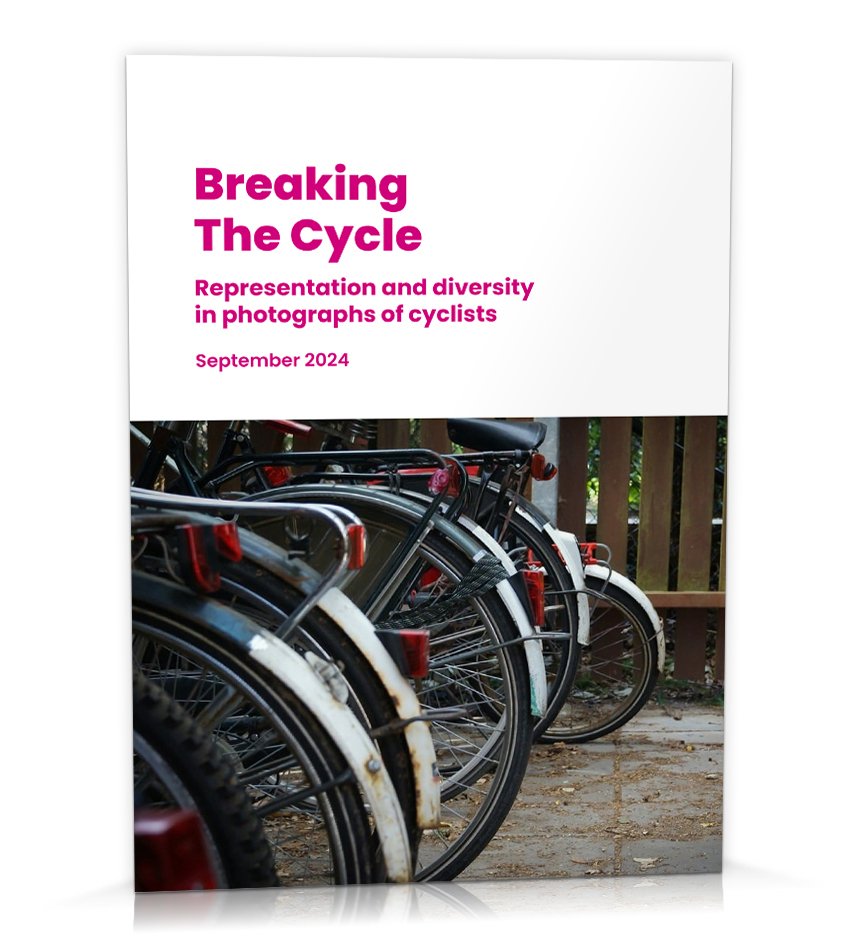
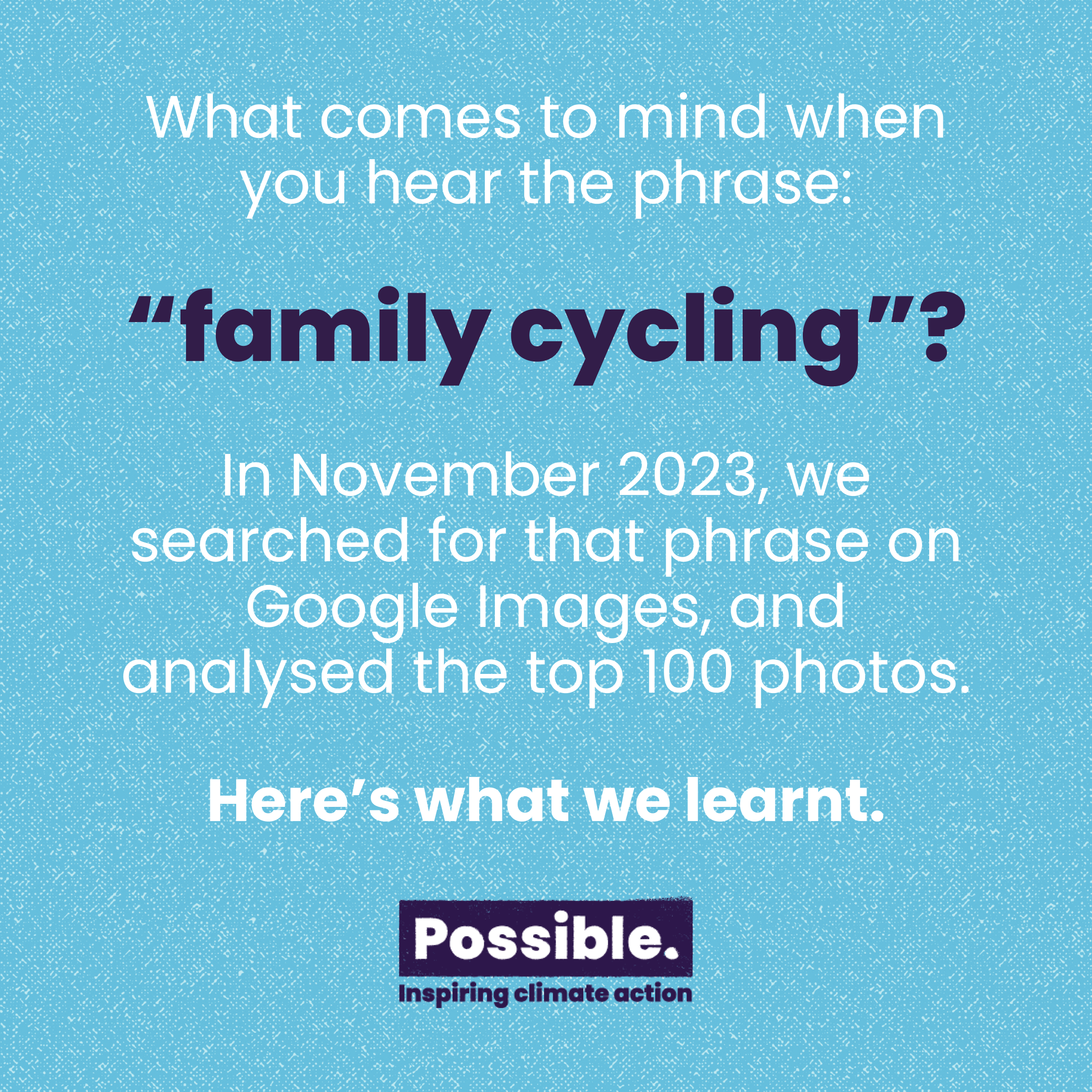
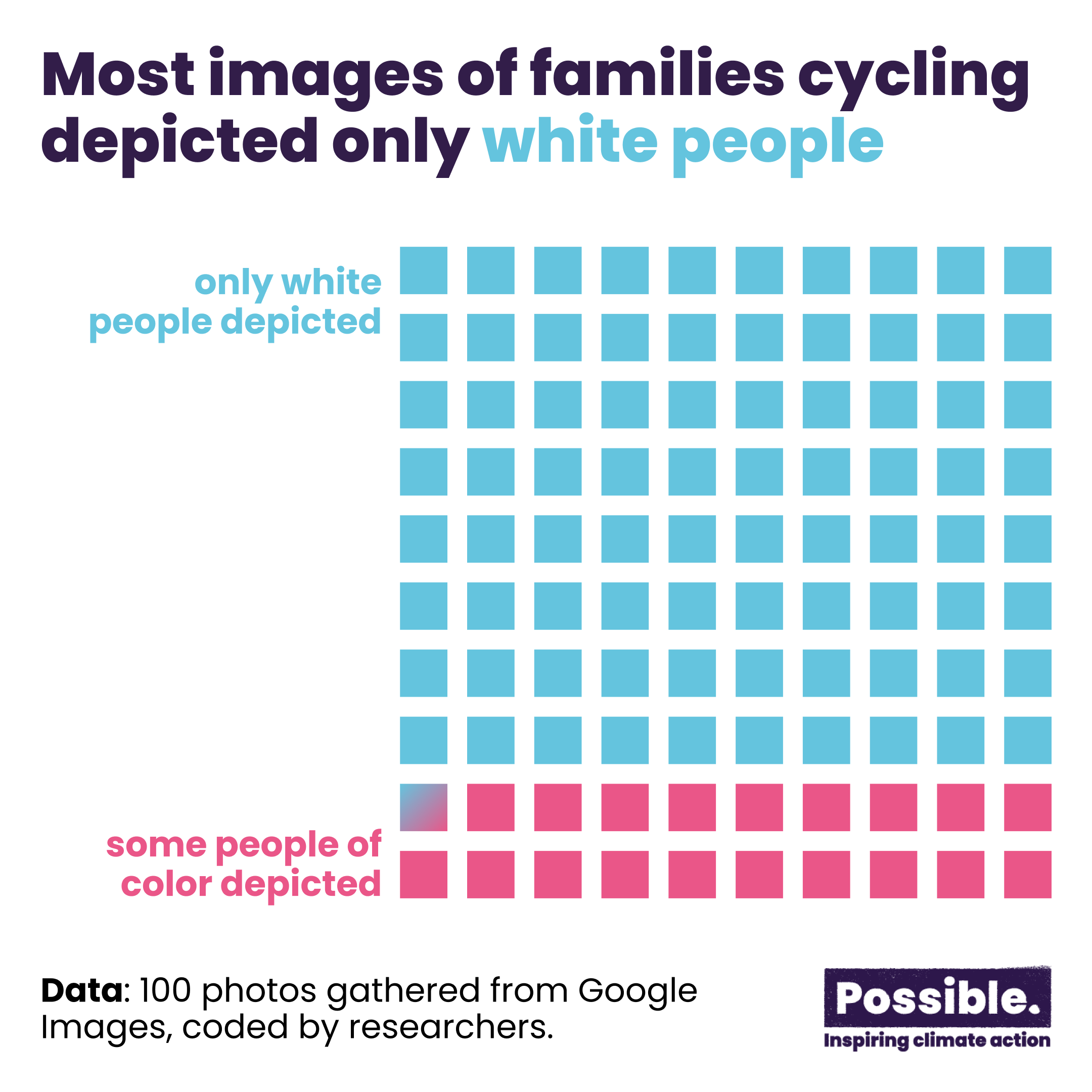

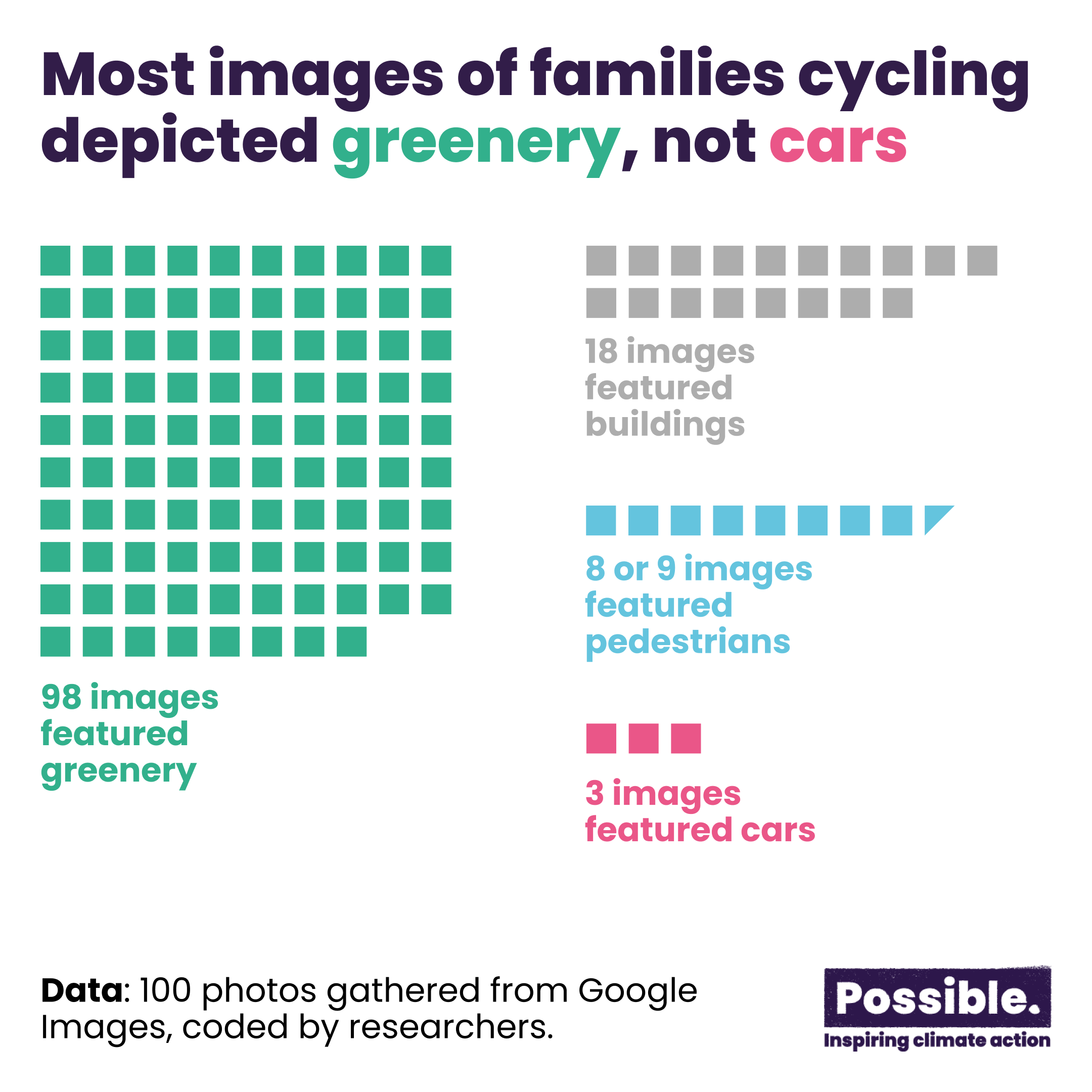
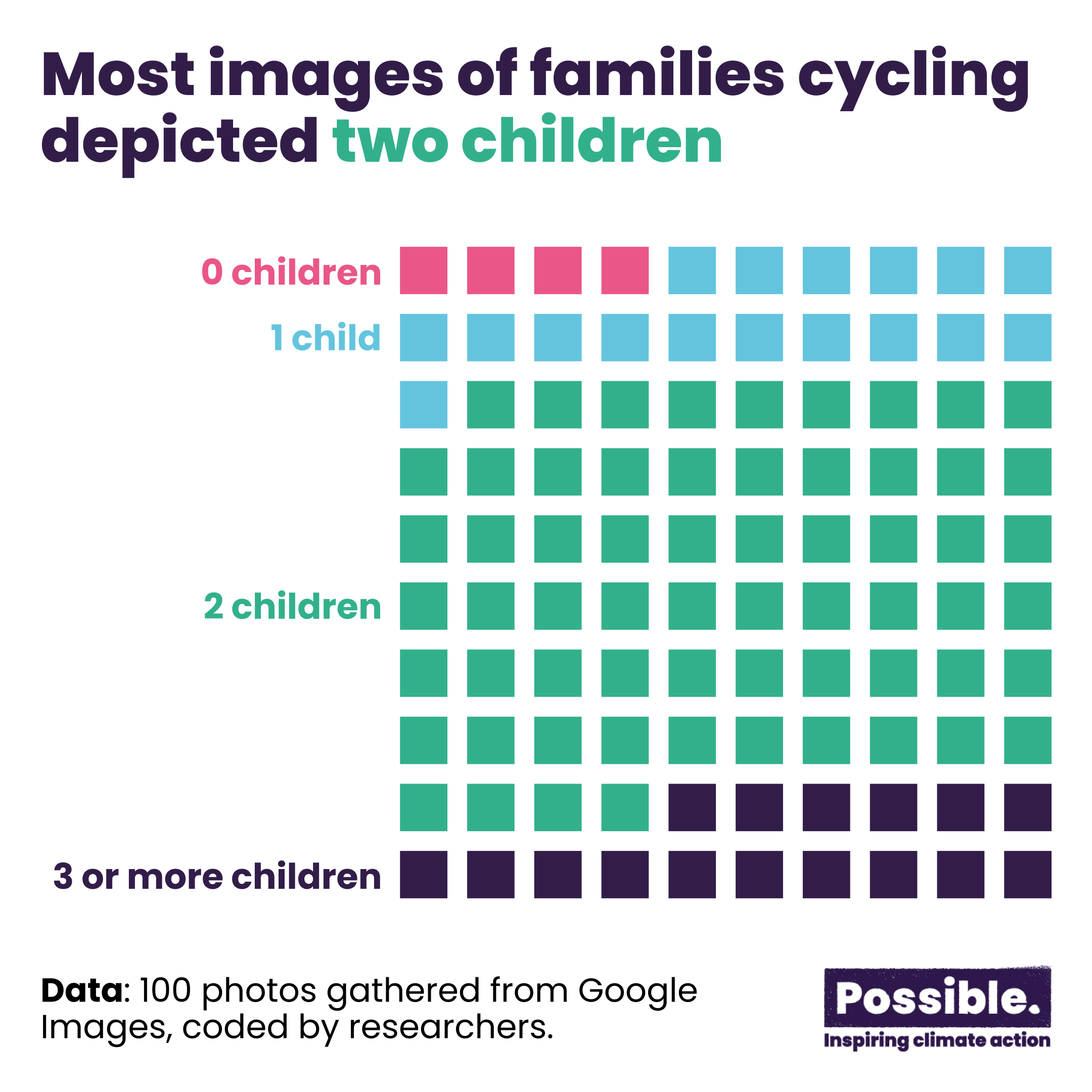
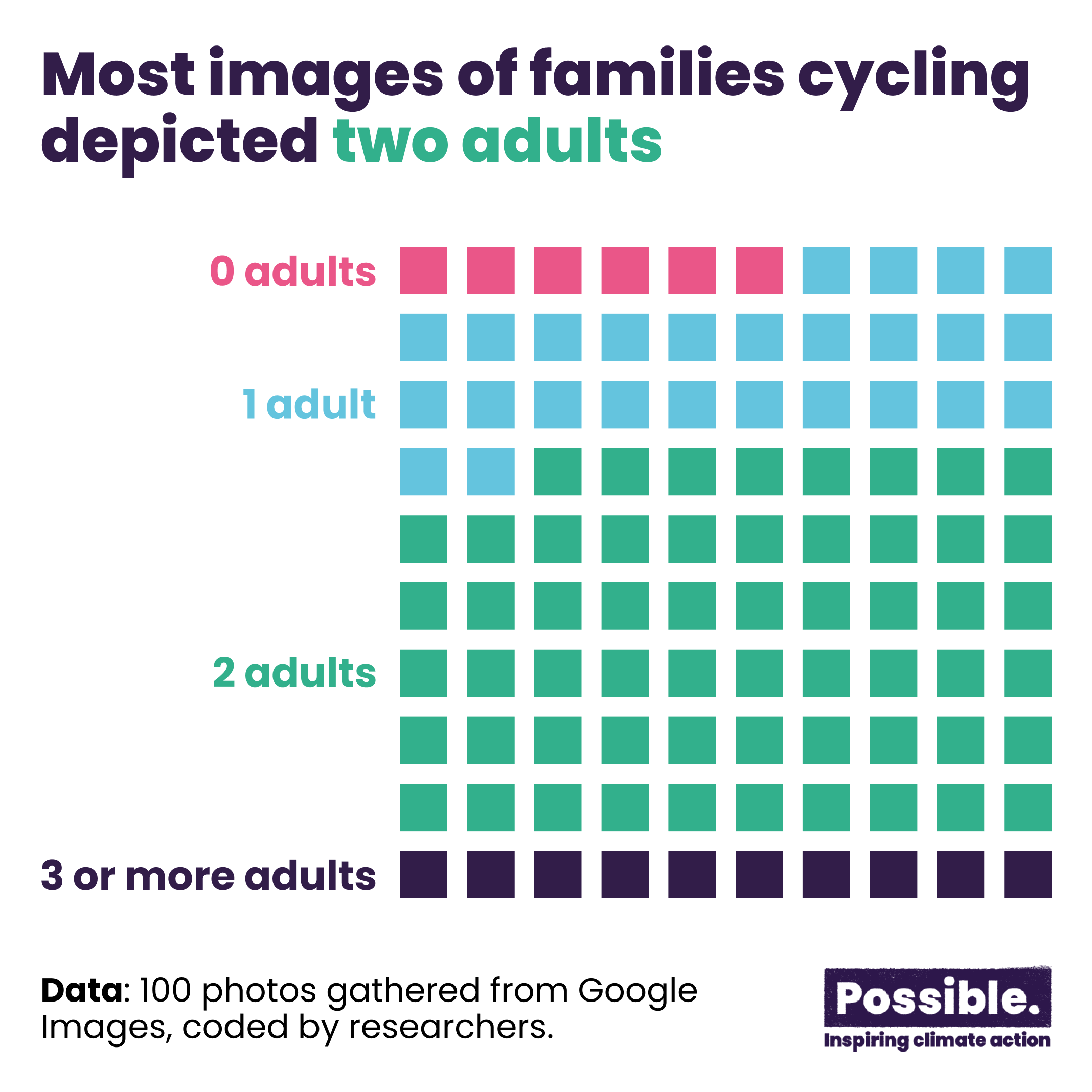
Our research shows there is a significant lack of diversity found in cycling imagery, both in terms of people who cycle and the types of cycling that is depicted. Our systematic review shows that images of bike users show predominantly white, slim and non-disabled folk and heterosexual nuclear families, and that the activity is undertaken in quiet rural locations (without buildings, motor traffic, pedestrians or cycle infrastructure).
The report argues that the lack of diversity in types of cycling and people who cycle may be a factor impacting take-up of this transport option. Those who don’t see themselves represented in images of cycling (e.g. disabled people, those with larger bodies, people of colour, LGBTQ+ families) may feel as if cycling is not for ‘people like me’, and thus be less likely to adopt it. Similarly, the fact that urban cycling, cycling without a helmet, and different types of cycles are not represented, may feed into a public perception of cycling as less accessible for certain people or in certain places.
This needs to change. We simply can’t afford to exclude a large proportion of the UK public from cycling at a time when moving to active transport is vital.
To hit our climate goals, UK car miles need to be drastically reduced. For this to happen, elected politicians and the public must work together to achieve a modal shift away from private cars towards walking, wheeling, and public transport.
We hope our new report will help authorities, campaigners, and other organisations to understand a key barrier to cycling in the UK, and inspire groups to source new imagery that can improve inclusivity.
